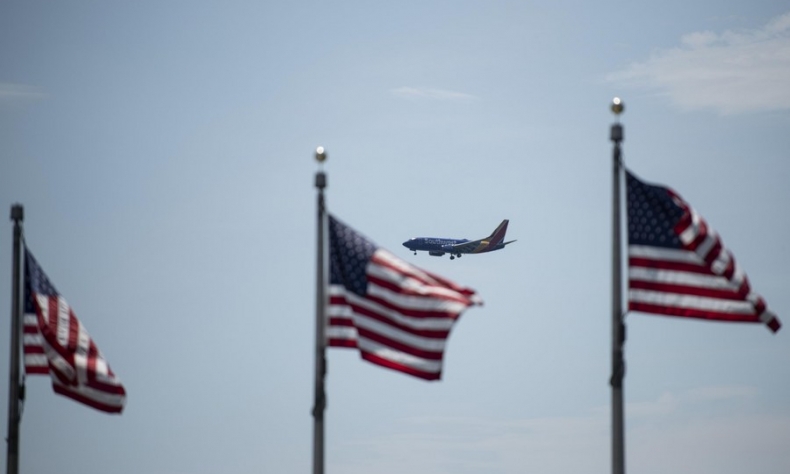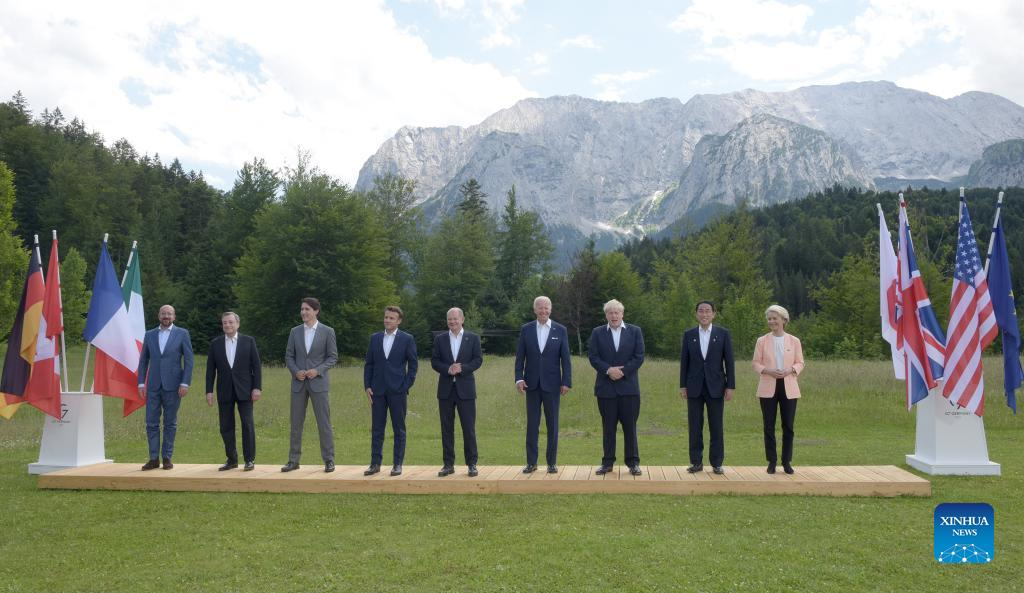One American Initiative After Another: to What Effect?

As the U.S. launches one initiative after another, its promises of development and peace remain unfulfilled. Why? It’s not that it can’t. It’s just that it won’t.
In June 2021, U.S. President Joe Biden debuted at the Group of Seven (G7) Summit, declaring “America is back at the table.” He offered an ambitious plan titled Build Back Better World (B3W), promising to help narrow the $40-trillion-plus infrastructure gap in the developing world by 2035.
Fast forward one year and the G7 leaders reunited, only to find the initiative in tatters. It lacks real effect as relevant bills are still stalled in the U.S. Congress; it lacks funding as actual investment runs below $6 million; and it lacks viability as America’s domestic infrastructure investment and maintenance have long been inadequate. Ironically, the B3W showed the world what could be achieved through an infrastructure partnership that “reflects democratic values.”
But the story doesn’t end there. At the recent G7 Summit, held from June 26 to 28 at Schloss Elmau in Germany, the U.S. launched the Partnership for Global Infrastructure and Investment (PGII). On the surface, the newfangled initiative seems more practical, intending to mobilize $600 billion, of which $200 billion will be contributed by the U.S., over the next five years to meet the infrastructural needs of developing countries. However, upon closer inspection, it is but old wine in a new bottle, as the problems that plagued the B3W remain.
According to a fact sheet published by the White House, the U.S. Government has launched 10 flagship projects under the PGII covering sectors such as electricity, nuclear power plant development, the digital economy, food security and vaccines. Yet many of them are existing U.S. programs in developing countries, and financing problems continue. For instance, the Digital Invest program in Asia, Africa, and Latin America aims to leverage $3.45 million in U.S. Agency for International Development funding to mobilize up to $335 million in private capital—a largely impossible task. If the developing world entrusts its infrastructure development to this project, opportunities will probably be missed. It is better to proceed with caution.

At the Ninth Summit of the Americas in June, the U.S. advanced an American version of the PGII, the Americas Partnership for Economic Prosperity (APEP), which is reminiscent of the Enterprise for the Americas Initiative (EAI) launched by President George H.W. Bush in 1990. Promising to establish “a free trade zone stretching from the port of Anchorage to Tierra del Fuego,” the EAI was briefly popular in Latin America and was the main topic during the first four summits of the Americas since 1994. However, the U.S. acted only in its own interests, ignoring the legitimate concerns of Latin American countries. Both sides became deeply divided over issues like agricultural subsidies, and the initiative eventually foundered.
Donald Trump launched the Growth in the Americas initiative in 2019, which was in fact a Growth in America initiative since it pursued the America First line, followed American standards, and served American interests. This initiative was dropped as Trump’s presidency ended.
The Biden administration’s B3W initiative has failed to make things better for Latin American countries. A second attempt now comes through the APEP. The U.S. claims that the APEP follows “high” standards, including the U.S.-style democracy, human rights policies, environmental protection and transparency. The underlying assumption is that all steps to be taken must meet U.S. standards. If the APEP follows in the footsteps of its predecessors and lets the U.S. dictate everything, it will hit a dead end as many of the so-called standards do not conform with local realities.
The U.S. usage of terms such as “growth,” “prosperity” and “partnership” shows that Washington is fully aware of the Latin American aspiration for respect and development. And yet, as the U.S. launches one initiative after another, its promises of development and peace remain unfulfilled. Why? It’s not that it can’t. It’s just that it won’t.

Mexican President Andrés Manuel López Obrador expressed his disappointment during his visit to Guatemala in May this year. “They have already approved $30 billion for the war in Ukraine, while we have been waiting since President Donald Trump, asking they donate $4 billion, and as of today, nothing, absolutely nothing,” he said.
Currently, the developing world’s demand for infrastructure is enormous and pressing. According to the Inter-American Development Bank, the investment gap in Latin America and the Caribbean accounts for 2.5 percent of the region’s GDP, reaching $150 billion per year. High demands require a robust increase in collaboration, which will allow wider space for targeted and high-quality public goods that truly benefit developing countries, and more opportunities for mutual benefit.
Many developing countries place high hopes on the U.S. as it is the world’s largest economy. Hopefully it will deliver something solid this time around, help developing countries tackle real problems and gradually achieve economic prosperity, and act as a constructive and responsible major country, rather than a spoiler that pays lip service and even discredits other effective public goods. Otherwise, the little credibility America’s leadership has left may soon expire.
The author is an op-ed contributor to Beijing Review and an expert on international studies.
 Facebook
Facebook
 Twitter
Twitter
 Linkedin
Linkedin
 Google +
Google +










